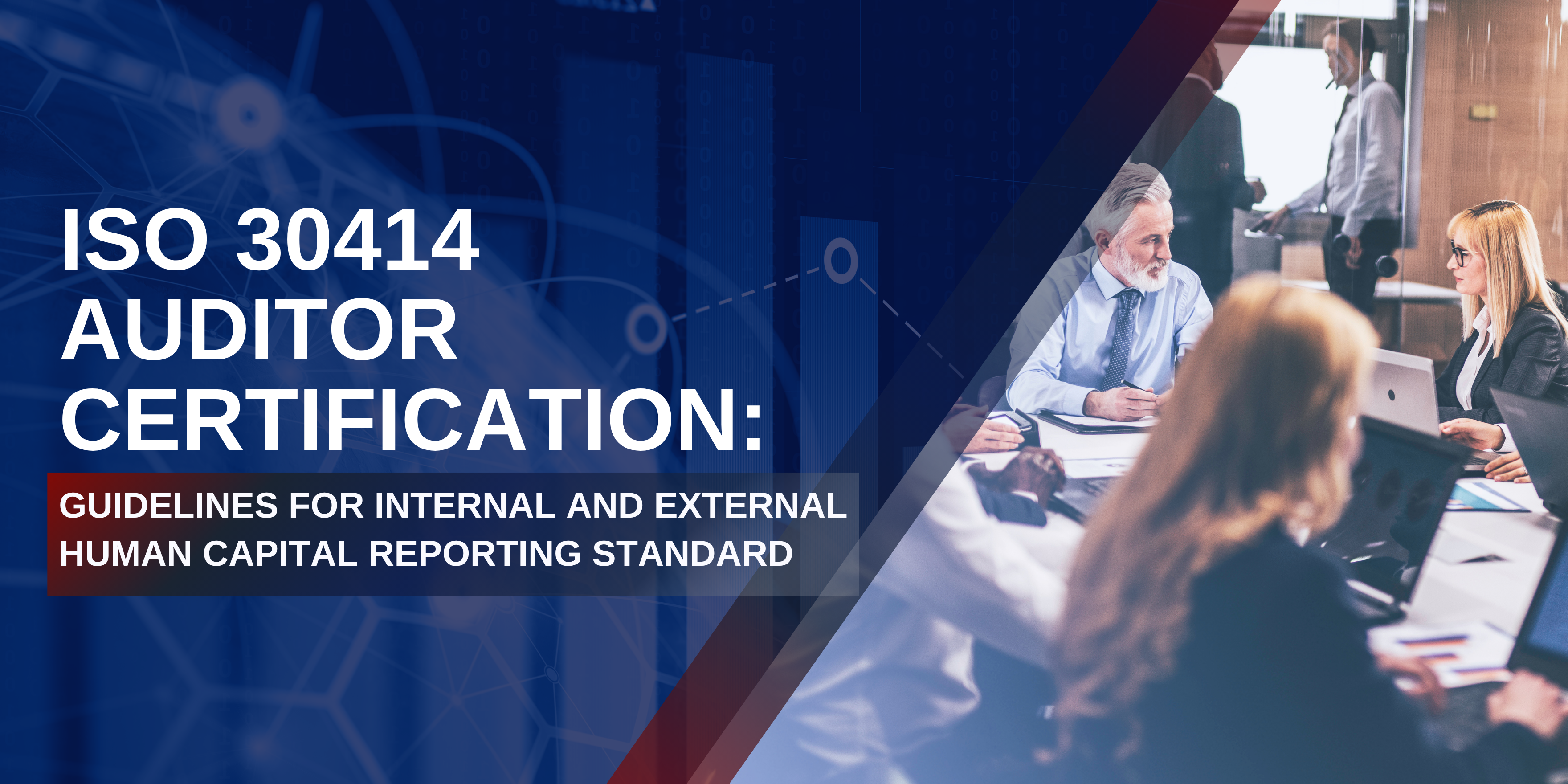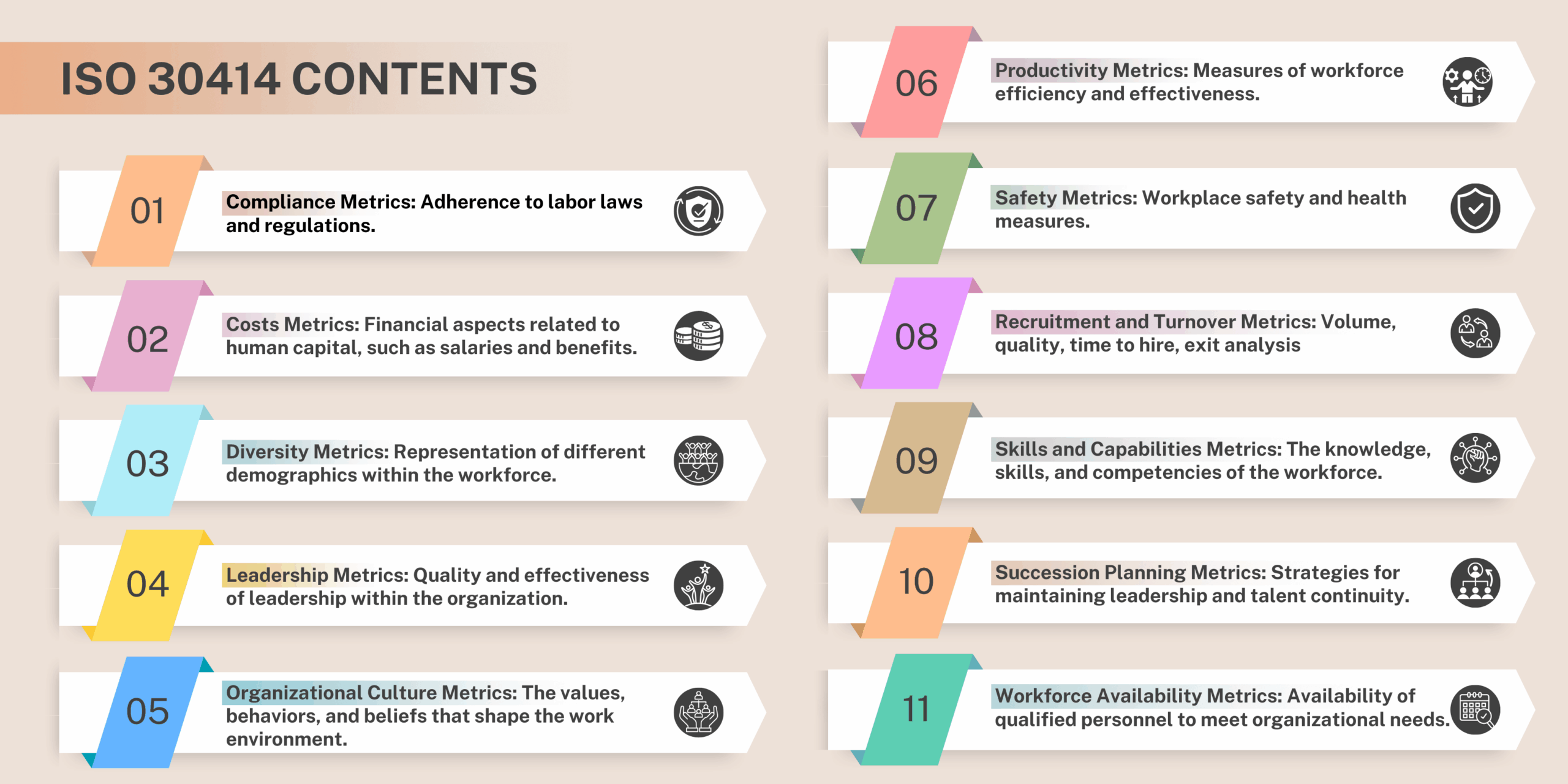ISO 30414 Auditor Certification: Guidelines for Internal and External Human Capital Reporting Standard

Why Human Capital Disclosure is Important in ESG Context ?
Global economy is transforming from physical to intellectual capital. According to Ocean Tomo Intellectual Capital Equity USA, In 500 Fortune Companies, 90% of value creation in S&P 500 firms is attributed to intangible assets. Human capital cost consumes lion’s share of intangible assets. With the rising investment in workforce, shareholders are keen to know as how this investment impacts the organization bottom line. There is a swell of interest by investors in human capital measurement and impact on the sustainability of organization.

With the emergence of Environmental, Social, and Governance (ESG) framework, human capital has become important for investment analysis, both from social and financial impact perspective. Human capital is now a key consideration for most companies around the world.
It is recognized as one of the most important drivers of competitiveness, value creation, and sustainable competitive advantage. Worldwide investors are engaging with companies to improve the workforce risk disclosure to cope with rapid environmental and technological change. CEOs are under growing pressure from investors, government, regulators, customers, employees, and communities, to become more transparent in their investments and outcomes.
Top 6 Reasons for Human Capital Disclosure
01
Organizations have a fiduciary duty to communicate existing and potential future risks deemed material to their business
Human Capital is clearly material to virtually any organization’s current and future success, therefore a fiduciary responsibility exists to provide greater information to shareholders, creditors
and others.
02
There is broad agreement by investors, boards directors, CEOs, CFOs, governments, human resources and workers
That human capital has an impact on organizational success. CEO’s state “Our people are our most valuable asset,” or “It all starts with people.” Shouldn’t such asset information be disclosed to key stakeholders.
03
Companies need smart, effective employees to compete
Understanding and quantifying human capital is critical for success and future growth internally within the organization.
04
The current disclosure gap obscures talent management effectiveness and material human capital risks to investors
With no visibility into utilization of a firm’s single largest expense, investors must rely on social media tidbits or simply make judgements on no information at all.
05
What gets measured gets managed
For most organizations, human capital is not well measured except as a cost. This suggests unbalanced reporting with only the cost side of the equation represented and the value-add
investment side missing.
06
Regulatory securities commissions, require extensive disclosure of all major assets
Including financial assets, physical assets, and technological assets such as patents. However, there is minimal disclosure of human capital which is, for most organizations, their largest annual operating expense.
What is ISO 30414?
ISO 30414 is an international standard titled “Human resource management-Guidelines for internal and external human capital reporting. ” It provides a set of guidelines for organizations to report on various aspects of their human capital, both internally and externally. The standard aims to help organizations measure, manage, and report on their workforce effectively, with a focus on improving workforce productivity, ROI, transparency and accountability. ISO 30414 provides a framework for measuring reporting 58 metrics on following 11 aspects of human capital, such as:

Purpose of the Program
The ISO 30414 Auditor Training Program aims to equip HR professionals, internal auditors, and organizational leaders with the knowledge and skills required to effectively audit and implement ISO 30414 – Human Capital Internal and External Reporting. As the first international standard that provides comprehensive guidelines for reporting human capital, ISO 30414 enables organizations to transparently disclose the value and impact of their human resources.
The purpose of this marketing initiative is to promote the training program, generate awareness, and attract participants who are seeking globally recognized expertise in human capital reporting and audit.

Benefits of the Training Program
01
Competitive Edge: Organizations with ISO 30414-compliant reporting gain stakeholder trust, improve investor relations, and demonstrate commitment to responsible business practices.
02
Strategic Decision Support: Participants will learn to interpret human capital data that supports strategic business decisions.
03
International Recognition: Participants will gain certification aligned with ISO 30414, enhancing their global credibility as Human Capital Auditors.
04
Improved Organizational Transparency: Certified auditors can help organizations align human capital metrics with global sustainability and ESG standards.
05
Capacity Building: Builds internal capacity to conduct audits, reducing reliance on external consultants.
Expected Outcomes
By the end of the training program, participants will be able to:
Understand the structure, intent, and key components of ISO 30414.
Conduct internal human capital audits based on ISO 30414 guidelines.
Evaluate compliance with global human capital reporting standards.
Recommend improvements in human capital measurement and reporting systems.
Prepare their organizations for third-party ISO 30414 certification audits.
Align human capital reporting with ESG, DEI, and sustainability goals.




